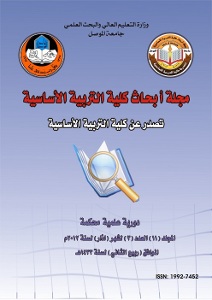Study the effect of defects on the quantum efficiency of perovskite solar cells
Abstract
Perovskite solar cells (PSCs) have generated considerable interest in the field of solar energy. With the rapid development of fabrication technology, high efficiency, environmentally friendly perovskite solar cells are becoming more attractive as candidates for power generation. Defects in the absorber and interface layers of mixed lead halide perovskite solar cells reduce the efficiency and stability of the cells. The current study examined the impact of defects density, defect capturing cross-section, defect level, and defect type on the quantum efficiency (QE) of the absorber layer. Furthermore, the impact of defects in the hole transport layer/absorber and electron transport layer/absorber interface layers is also be extensively studied. SCAPS-1D will be used to simulate perovskite solar cells in this work. The perovskite solar cells structure proposed is FTO/ ETM/ absorber/ HTM structure based on TiO2 as ETM layer; Cu2O as HTM layer, and on CH3NH3PbI3 as absorber layer. According to the results, the quantum efficiency QE reduced sharply from 90.2% to 20% with varying the density of the defect Nt and the capture cross-section carriers in absorber layer from 1015 cm-3 to 10 18 cm-3 and 210-13 cm2 to 210-10 cm2, respectively. Additionally, it is discovered that the capture cross-section carriers exhibits behavior similar to that of the absorber layer's defect density.
